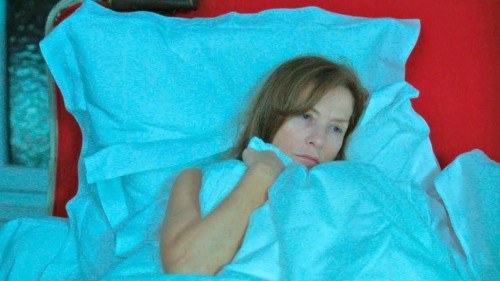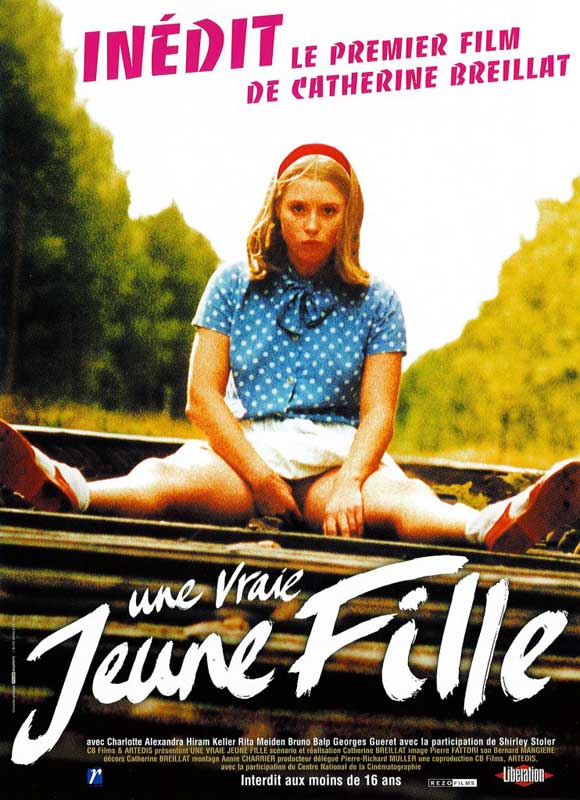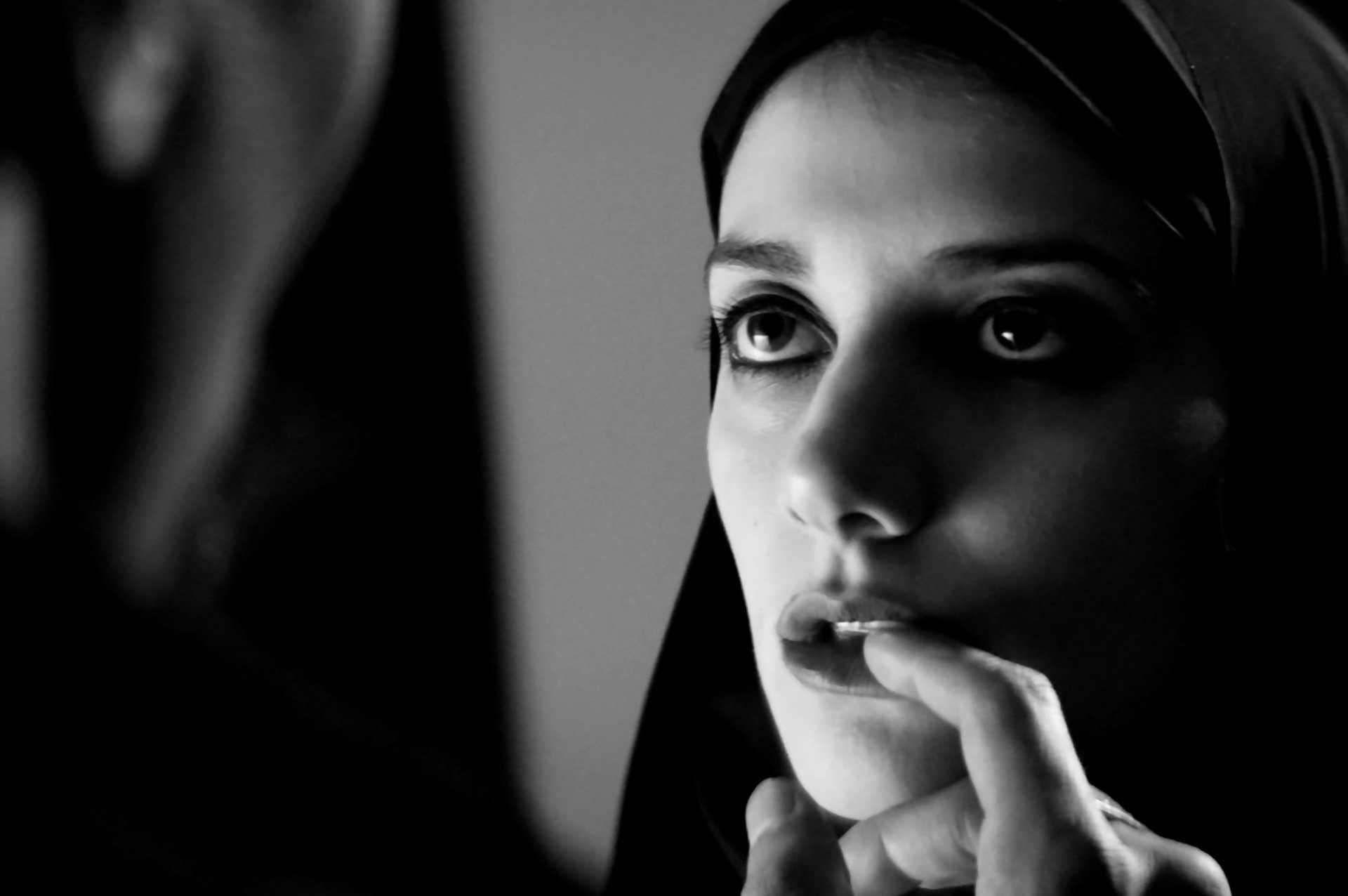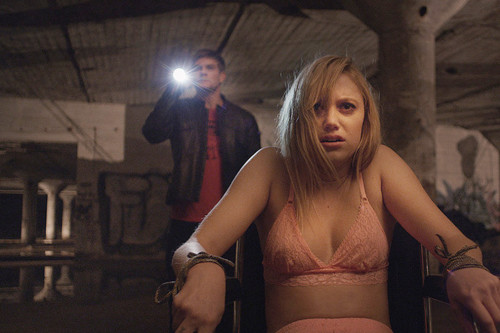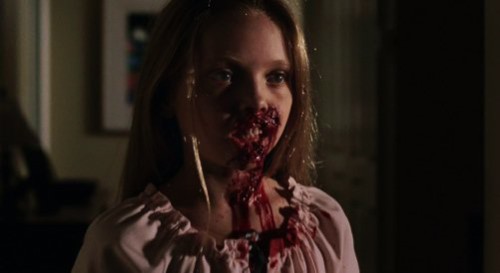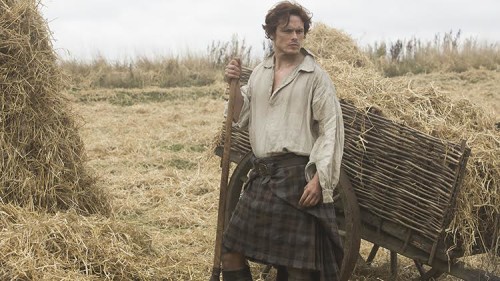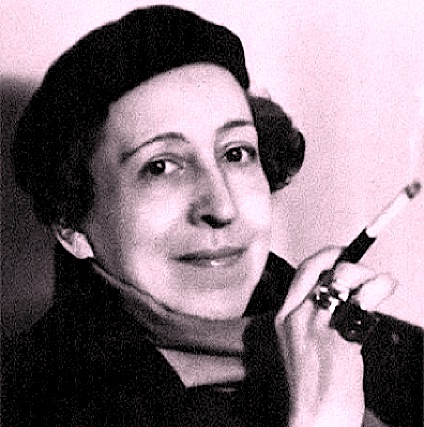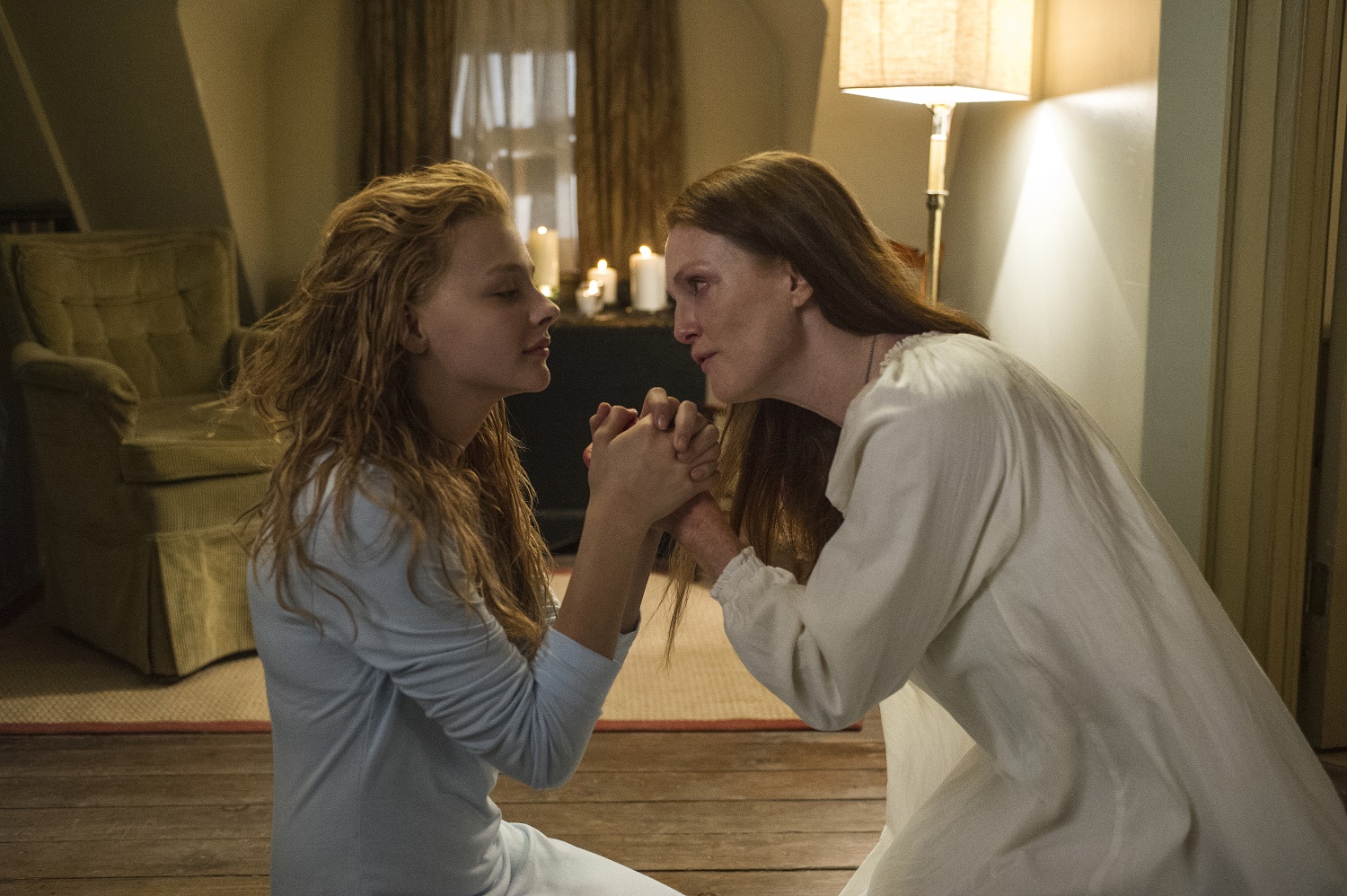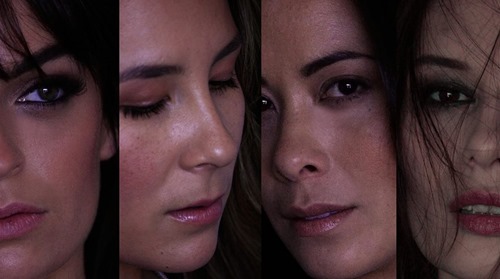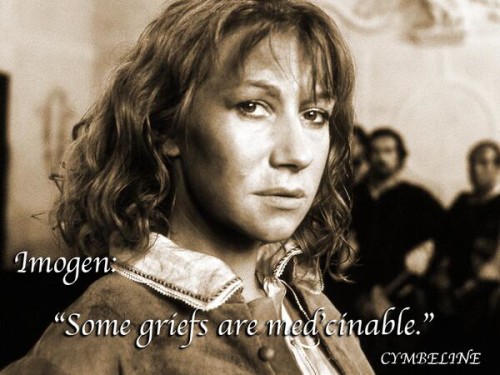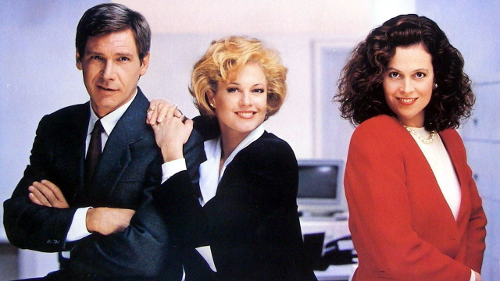This guest post by Becky Kukla appears as part of our theme week on The Female Gaze.
The name Catherine Breillat is almost synonymous with the concept of the female gaze.
Her works and the female gaze go hand in hand, many of her films providing a platform on which to explore and challenge ideas about sexuality, body image and sexual desire. Romance, A Ma Soeur and Anatomy Of Hell are amongst the most discussed; each film considers our preconceived notions of female sexuality and seeks to question stereotypes about it. Breillat is probably most renowned for this exploration, and the female-centric narratives that her films have. More importantly, her works talk openly from a distinctly female perspective – which is why they lend themselves so well to the concept of the female gaze.
All of this is nothing new, of course. Breillat has earned her title of “porn-auteur” a thousand times over (however ignorant that title is). However, it’s Breillat’s most recent film, Abuse of Weakness (2014), which I think actually pushes our ideas about the female gaze in relation to power and control in onscreen relationships. I was actually lucky enough to (accidentally) buy tickets to a Q & A screening of Abuse of Weakness at the London Film Festival in 2013 (accidentally because I didn’t realize Breillat would actually be there), and she spoke at great length about the biographical nature of Abuse of Weakness. The film itself has a surprising lack of explicitness in terms of nudity or sex. It stands out some way from Romance or Anatomy of Hell, but I genuinely believe it delivers a discourse about the female gaze which is just as interesting, if not more so.
Abuse of Weakness tells the story of Maud Shainberg (the incredibly talented Isabelle Huppert), a director/writer recovering from a stroke. She casts notorious con-man Vilko Piran (Kool Shen) in her new film, and a strange, manipulative relationship begins between the two of them. Somewhere between lovers and colleagues, Vilko begins to exploit Maud–emotionally and financially. Maud, desperate for affection and frustrated by her physical condition, doesn’t stop the exploitation – even though she is completely aware of what is happening to her. It’s an intricate look at relationships and abuse and an autobiographical representation of Breillat herself on making Bad Love. It’s an incredibly uncomfortable film to watch, not only because we know it’s Breillat. Throughout Abuse of Weakness we are aligned with Maud and we not only understand her desires, but can also feel ourselves becoming exploited too.
So where does the elusive female gaze come in? The female gaze is a relatively new cinematic term; traditionally the vast majority of mainstream cinema is aligned with the male gaze. To view and engage with a film, the audience must read the work as a straight, heterosexual male – identifying with the male protagonist and objectifying the women on-screen. Active male, passive female. The female gaze, especially in Breillat’s work, not only allows us to identify with the female protagonist but also allows us to objectify the male characters within the film. As Metz states, cinema is predominantly concerned with pleasure – “The spectator is seen as both the voyeur and viewer who is distanced from the object viewed and who has control over what he sees (and desires).” Breillat’s female gaze enables viewers to actively engage with the female protagonist, and derive pleasure from our identification with her. The female gaze is more than simply “reversing” the male gaze; it allows for a questioning of why the male gaze is so inherently built into cinema and why women are aggressively sexualised within cinema. With Abuse of Weakness, Breillat attacks both of these concerns whilst also actively encouraging identification with Maud – our female protagonist.
The opening sequence of Abuse of Weakness is actually a pretty neat summation of the way in which Breillat exposes the male gaze and actively rejects it. The film begins with a slow pan upward and gradually Maud is revealed lying naked within a large bed. The sheets are white (virginal) and before Maud appears onscreen, there is a familiarity to this type of scene. We expect to see a young, beautiful girl asleep on the pillows – yet we are met with Isabelle Huppert. Huppert is, of course, incredibly beautiful but at 62 she is (by Western standards) far too old to be naked in bed in your local cinema screen. Breillat, naturally, does not care. As we focus on Maud’s face, it is immediately apparent that something is wrong. Maud is having a stroke. As she falls out of the bed onto the floor, she is focused in the foreground of the shot whilst a painting of a naked woman is positioned behind her. This is no mistake; the audience are invited to gaze upon both naked bodies – not to sexualise or fetishisize but as two peieces of art. One is oil, the other is film. As we see in the opening scene of Abuse of Weakness, the audience is invited to view Maud as more than a naked body, or a sexualised piece of flesh, completely contrary to how cinema frequently presents women onscreen. Maud is naked, yes, but it is fear and death which we see in this sequence, not desire or sex. Maud can be naked without being objectified – a feat rarely achieved by women in most films.
Though Maud and Vilko’s struggle for power is they key theme of Abuse of Weakness, it’s actually Maud’s battle for autonomy that wins out as what the film is actually about. This, even more so, solidifies the film as a product of the female gaze. Although Maud is manipulated and abused, it is through her struggles with her own body – a feeling that most women can probably identify with. On the surface, Maud’s biggest turmoil is the moment where she must admit to her family what has been happening. She seems confused, vulnerable: “It was me…and it wasn’t.” Vilko’s manipulations (the “abuse of weakness”) meant that Maud was unable to have autonomy and live her life the way she desired. However, it was Maud’s stroke that initially took away her autonomy. Breillat often explores female body image within her works (A Ma Soeur instantly springs to mind) and Abuse of Weakness is no exception. Maud’s body has literally failed her, with no warning. The stroke takes away her freedom and her autonomy. Maud’s struggle with her body can easily be read as a comment on body image/representation in modern society. Women are expected to be younger, thinner, more beautiful than ever before – what happens when you can’t be? You lose autonomy and freedom striving to be perfect. Maud proves this in Abuse of Weakness and the question is asked; what can women amount to if their body is not good enough?
Although Abuse of Weakness is certainly the least “sexual” of all of Breillat’s films (physically, I mean), the film still places Maud’s desire for sex as an incredibly important concept. Whilst it’s never clear whether Maud and Vilko have a sexual relationship, there are many sequences where Vilko is topless or nearly nude. He is an attractive man, younger than Maud, and the viewer is invited to share in Maud’s objectification of him. To quote Penley, “Feminist film theory [seeks to] look at ways in which roles are gendered…looking is gendered masculine and ‘being looked at is gendered feminine.'” Breillat encourages the audience to place Vilko in a feminine position of objectification, and forces us to reevaluate the way we gender passivity as female and take a traditionally masculine position when we objectify Vilko.
All of these aspects – sexuality, body image, passive/active engagement and the power struggle throughout the film – combine to create a piece of cinema completely devoted to the female gaze. Viewers can easily identify with Maud and reject the notion of the male gaze. Due to Breillat’s influence as a female director and her rejection of the male gaze, the female (and male) audience are able to establish a relationship with Maud as a woman, a person and not a passive object to be lusted over or desired. Whilst it won’t stir up as much controversy as Anatomy of Hell or Romance (I mean, what can?), Abuse of Weakness is still highly valuable as a text which explores femininity and power – and well worth a watch.
Recommended Reading: France on Film: Reflections on Popular French Cinema by Lucy Mazdon
Becky Kukla is a 20-something living in London, working in the TV industry (mostly making excellent cups of tea). She spends her spare time watching everything Netflix has to offer and then ranting about it on her blog.
